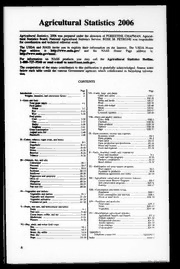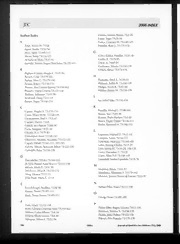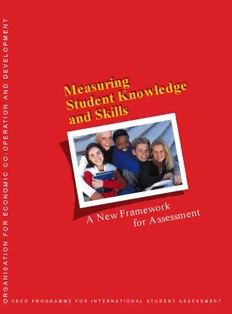
Measuring student knowledge and skills : a new fremework for assessment PDF
Preview Measuring student knowledge and skills : a new fremework for assessment
T N Are students well prepared to meet the challenges of the future? Parents, M e E students, the public and those who run education systems need to know whether as ur M children are acquiring the necessary skills and knowledge to become tomorrow's in g S P citizens and to continue learning throughout life. International indicators can describe tu d O the levels of achievement in various countries, to which others might aspire. They can en provide direction for schools' instructional efforts and for students' learning as well as t K L n o E insights into curriculum strengths and weaknesses. w le V d g e E ldaeuvneclohpTe dhs eut ch2he9 iOnMdEeiCcmaDbtoe rPrs r cooognur naat mrriemegseu olaffor trbh Iaens iOtse.Er nPCaIDStiA,o nt oaagilm eStsht ueadrt ewansitst ehAs sosistnheges rsh mocoweun ntf at(rrPi esIstSu, Adhe)an vttoes and Skills D D MM ee aa ss uu rr ii nnKgg nn oo ww ll ee dd gg ee aanpdp rsokaicllhsi nthga tt haer ee ensds eonft iaclo mfopr ufulslol rpya retdicuicpaattiioonn ihna svoec aiectqyu. ired some of the knowledge A New Frame N AN SS tt uuddd eSeSnnkkttii l lKll ss A New Framework for Assessment, the first volume in the PISA series, provides wor O aa nn d the conceptual framework on which the PISA 2000 assessment is based. It defines the k fo I domains of reading literacy, mathematics literacy and scientific literacy forming the r A T s A core of PISA in terms of the content that students need to acquire, the processes that se ss R need to be performed, and the contexts in which knowledge and skills are applied. It m en E also describes the methods developed to ensure that the assessment tasks are valid t P across countries, are strong at measuring relevant skills and are based on authentic life O situations. - O C The OECD Programme for International Student Assessment (PISA) C PISA is a collaborative process, bringing together scientific expertise from the I participating countries and steered jointly by their governments on the basis of M shared, policy-driven interests. Key characteristics of PISA make it an O unprecedented effort to measure students literacy: N – A long-term commitment: spanning over the decade to come, it will enable countries to monitor continously their progress. Future volumes in this series O w o r k wupidlla tfeodc uesv eorny tthhree ete ystesa rtsh.e mselves, the results of which will be published and EC A N e w F r a m e A s s e s s m e n t – The age-group covered: the 15-year-olds. Assessing young people near the end f o r R of their compulsory schooling provides a significant indication of educational O systems performances. F – The literacy approach: knowledge, skills and competencies are not tested in terms of school curricula but rather in terms of what is likely to equip young N people for life. O – A worldwide coverage: 32 countries including 28 OECD countries and Brazil, I China, Latvia and the Russian Federation. T A O S I E N C A 9:HSTCQE=V\UZX\: G D R (96 1999 05 1 P) FF 150 - ISBN 92-64-17053-7 99 O O E C D P R O G R A M M E F O R I N T E R N A T I O N A L S T U D E N T A S S E S S M E N T (cid:211) OECD, 1999. (cid:211) Software: 1987-1996, Acrobat is a trademark of ADOBE. All rights reserved. OECD grants you the right to use one copy of this Program for your personal use only. Unauthorised reproduction, lending, hiring, transmission or distribution of any data or software is prohibited. You must treat the Program and associated materials and any elements thereof like any other copyrighted material. All requests should be made to: Head of Publications Service, OECD Publications Service, 2, rue André-Pascal, 75775 Paris Cedex 16, France. MEASURING STUDENT KNOWLEDGE AND SKILLS A New Framework for Assessment ORGANISATION FOR ECONOMIC CO-OPERATION AND DEVELOPMENT ORGANISATION FOR ECONOMIC CO-OPERATION AND DEVELOPMENT Pursuant to Article 1 of the Convention signed in Paris on 14th December 1960, and which came into force on 30th September 1961, the Organisation for Economic Co-operation and Development (OECD) shall promote policies designed: – to achieve the highest sustainable economic growth and employment and a rising standard of living in Member countries, while maintaining financial stability, and thus to contribute to the development of the world economy; – to contribute to sound economic expansion in Member as well as non-member countries in the process of economic development; and – to contribute to the expansion of world trade on a multilateral, non-discriminatory basis in accord- ance with international obligations. The original Member countries of the OECD are Austria, Belgium, Canada, Denmark, France, Germany, Greece, Iceland, Ireland, Italy, Luxembourg, the Netherlands, Norway, Portugal, Spain, Sweden, Switzerland, Turkey, the United Kingdom and the United States. The following countries became Members subsequently through accession at the dates indicated hereafter: Japan (28th April 1964), Finland (28th January 1969), Australia (7th June 1971), New Zealand (29th May 1973), Mexico (18th May 1994), the Czech Republic (21st December 1995), Hungary (7th May 1996), Poland (22ndNovember 1996) and Korea (12th December 1996). The Commission of the European Communities takes part in the work of the OECD (Article 13 of the OECD Convention). Publié en français sous le titre : MESURER LES CONNAISSANCES ET COMPÉTENCES DES ÉLÈVES Un nouveau cadre d’évaluation Photo Credit: PIX/Denis Boissavy © OECD 1999 Permission to reproduce a portion of this work for non-commercial purposes or classroom use should be obtained through the Centre français d’exploitation du droit de copie (CFC), 20, rue des Grands-Augustins, 75006 Paris, France, Tel. (33-1) 44 07 47 70, Fax (33-1) 46 34 67 19, for every country except the United States. In the United States permission should be obtained through the Copyright Clearance Center, Customer Service, (508)750-8400, 222Rosewood Drive, Danvers, MA 01923 USA, or CCC Online: http://www.copyright.com/. All other applications for permission to reproduce or translate all or part of this book should be made to OECD Publications, 2,rueAndré-Pascal, 75775 Paris Cedex 16, France. FOREWORD The OECD's International Programme for Student Assessment (PISA) represents a new commitment by the governments of OECD countries to monitor the outcomes of education systems in terms of student achievement, within a common international framework. PISA is, above all, a collaborative effort, bringing together scientific expertise from the participating countries and steered jointly by their governments on the basis of shared, policy-driven interests. Participating countries take responsibility for the project at the policy level. Experts from participating countries also serve on working groups that are charged with linking the PISA policy objectives with the best available substantive and technical expertise in the field of internationally comparative assessment. Through participating in these expert groups, countries ensure that the PISA assessment instruments are internationally valid and take into account the cultural and curricular context of OECD Member countries; have strong measurement properties; and place an emphasis on authenticity and educational validity. The design and implementation of the surveys is undertaken under the direction of the OECD Secretariat, through an international consortium led by the Australian Council for Educational Research (ACER). Other partners in this consortium include the Netherlands National Institute for Educational Measurement, the Service de pédagogie expérimentale de l'Université de Liège, and WESTAT. This publication sets out the conceptual framework underlying the OECD/PISA assessments: it defines each domain to be assessed and explains what will be assessed and how. It also describes the context and constraints within which the OECD/PISA assessments are placed. It is published on the responsibility of the Secretary-General of the OECD. 3 OECD 1999 ACKNOWLEDGEMENTS The PISA assessment frameworks were developed by expert panels under the direction of RaymondAdams from the ACER. The reading expert panel was chaired by Dr. Irwin Kirsch of Educational Testing Service, the mathematics panel was chaired by Professor Jan de Lange of the University of Utrecht, and the science expert panel was chaired by Professor Wynne Harlen of the Scottish Council for Research in Education. The members of the functional expert groups are listed in Appendix 1. The frame- works have also been informed by reviews from expert panels in each of the participating countries. They were adopted in December 1998 by OECD governments, through the Board of Participating Countries. The publication was prepared by the Statistics and Indicators Division of the Directorate for Education, Employment, Labour and Social affairs, principallyAndreas Schleicher. 4 OECD 1999 TABLE OF CONTENTS Introduction ........................................................................................................................................................ 7 The Design of OECD/PISA 2000 ..................................................................................................................... 9 Basic features of OECD/PISA ............................................................................................................................. 9 How OECD/PISA is different from other international assessments ............................................................ 10 What is being assessed in each domain .......................................................................................................... 11 How the assessment will take place and how results will be reported ...................................................... 14 The context questionnaires and their use ...................................................................................................... 15 OECD/PISA – An evolving instrument .............................................................................................................. 16 Developing OECD/PISA and its Assessment Frameworks – A Collaborative Effort .............................. 17 Chapter 1. Reading Literacy .......................................................................................................................... 19 Definition of the domain ................................................................................................................................... 19 Organisation of the domain and task characteristics ..................................................................................... 21 Assessment structure ......................................................................................................................................... 35 Reporting scales ................................................................................................................................................. 37 Other issues ........................................................................................................................................................ 37 Chapter 2. Mathematical Literacy .................................................................................................................. 41 Definition of the domain ................................................................................................................................... 41 Organisation of the domain ............................................................................................................................... 42 Task characteristics ............................................................................................................................................. 50 Assessment structure ......................................................................................................................................... 54 Reporting scales ................................................................................................................................................. 56 Other issues ........................................................................................................................................................ 56 Chapter 3. Scientific Literacy .......................................................................................................................... 59 Definition of the domain ................................................................................................................................... 59 Organisation of the domain ............................................................................................................................... 61 Task characteristics ............................................................................................................................................. 66 Assessment structure ......................................................................................................................................... 68 Reporting scales ................................................................................................................................................. 71 Other issues ........................................................................................................................................................ 72 References ........................................................................................................................................................... 73 Appendix 1. Functional Expert Group Membership..................................................................................... 77 Appendix 2. Considerations for Future Survey Cycles of OECD/PISA........................................................ 79 5 OECD 1999 INTRODUCTION How well are young adults prepared to meet the challenges of the future? Are they able to analyse, reason and communicate their ideas effectively? Do they have the capacity to continue learning through- out life? Parents, students, the public and those who run education systems need to know. Many education systems monitor student learning to provide some answers to these questions. Comparative international analyses can extend and enrich the national picture by establishing the levels of performance being achieved by students in other countries and by providing a larger context within which to interpret national results. They can provide direction for schools’ instructional efforts and for stu- dents’ learning as well as insights into curriculum strengths and weaknesses. Coupled with appropriate incentives, they can motivate students to learn better, teachers to teach better and schools to be more effective. They also provide tools to allow central authorities to monitor achievement levels even when administration is devolved and schools are being run in partnership with communities. Governments and the general public need solid and internationally comparable evidence of educa- tional outcomes. In response to this demand, the Organisation for Economic Co-operation and Develop- ment (OECD) has launched the Programme for International Student Assessment (PISA). OECD/PISA will produce policy-oriented and internationally comparable indicators of student achievement on a regular and timely basis. The assessments will focus on 15-year-olds, and the indicators are designed to contrib- ute to an understanding of the extent to which education systems in participating countries are preparing their students to become lifelong learners and to play constructive roles as citizens in society. OECD/PISA represents a new commitment by the governments of OECD countries to monitor the outcomes of education systems in terms of student achievement, within a common framework that is internationally agreed. While it is expected that many individuals in participating countries, including professionals and lay-persons, will use the survey results for a variety of purposes, the primary reason for developing and conducting this large-scale international assessment is to provide empirically grounded information which will inform policy decisions. The results of the OECD assessments, to be published every three years along with other indicators of education systems, will allow national policy makers to compare the performance of their education systems with those of other countries. They will also help to focus and motivate educational reform and school improvement, especially where schools or education systems with similar inputs achieve mark- edly different results. Further, they will provide a basis for better assessment and monitoring of the effec- tiveness of education systems at the national level. OECD/PISA is a collaborative process. It brings together scientific expertise from the participating countries and is steered jointly by their governments on the basis of shared, policy-driven interests. Fol- lowing an overview of the design of OECD/PISA and a summary of the most important features of the assessments, there is a description of the nature of this collaboration, and how it is being used to develop the frameworks that will define the OECD assessments. The remaining sections of this publication then set out the conceptual framework underlying the OECD/PISA assessments: they define each domain to be assessed and explain what will be assessed and how. They also describe the context and constraints within which the OECD/PISA assessments are placed. 7 OECD 1999 Measuring Student Knowledge and Skills What is OECD/PISA? A summary of key features Basics – An internationally standardised assessment, jointly developed by participating countries and administered to 15-year-olds in groups in their schools. – Administered in 32 countries, of which 28 are members of the OECD. – Between 4500 and 10000 students will typically be tested in each country. Content – PISA covers three domains: reading literacy, mathematical literacy and scientific literacy. – PISA aims to define each domain not merely in terms of mastery of the school curriculum, but in terms of important knowledge and skills needed in adult life. The assessment of cross-curriculum compe- tencies is an integral part of PISA. – Emphasis is placed on the mastery of processes, the understanding of concepts and the ability to function in various situations within each domain. Methods – Pencil and paper tests are used, with assessments lasting a total of 2 hours for each student. – Test items are a mixture of multiple-choice test items and questions requiring the student to construct their own responses. The items are organised in groups based on a passage setting out a real-life situation. – A total of about 7 hours of test items is included, with different students taking different combinations of the test items. – Students answer a background questionnaire which takes 20-30 minutes to complete, providing information about themselves. School principals are given a 30-minute questionnaire asking about their schools. Assessment cycle – The first assessment will take place in 2000, with first results published in 2001, and will continue thereafter, in three-year cycles. – Each cycle looks in depth at a “major” domain, to which two-thirds of testing time are devoted; the other two domains provide a summary profile of skills. Major domains are reading literacy in 2000, mathematical literacy in 2003 and scientific literacy in 2006. Outcomes – A basic profile of knowledge and skills among students at the end of compulsory schooling. – Contextual indicators relating results to student and school characteristics. – Trend indicators showing how results change over time. 8 OECD 1999
The list of books you might like

What Happened to You?

Shatter Me Complete Collection (Shatter Me; Destroy Me; Unravel Me; Fracture Me; Ignite Me)

The 48 Laws of Power

A Thousand Boy Kisses
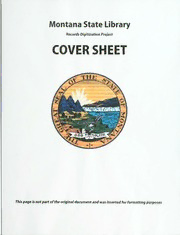
Apprenticeship and training program biennial report for ...
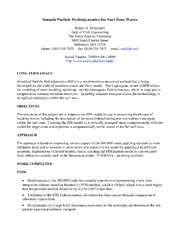
DTIC ADA522305: Smooth Particle Hydrodynamics for Surf Zone Waves
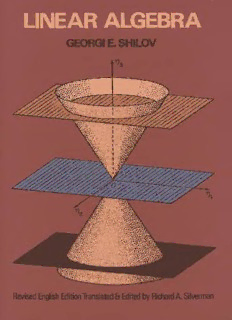
Georgi E. Shilov – Linear Algebra

Old Testament Essentials: Creation, Conquest, Exile and Return (The Essentials Set)
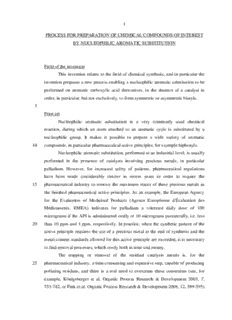
BY NUCLEOPHILIC AROMATIC SUBSTITUTION - Jacques Mortier
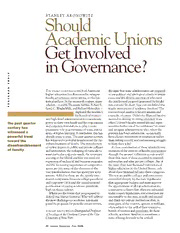
ERIC EJ746033: Should Academic Unions Get Involved in Governance?
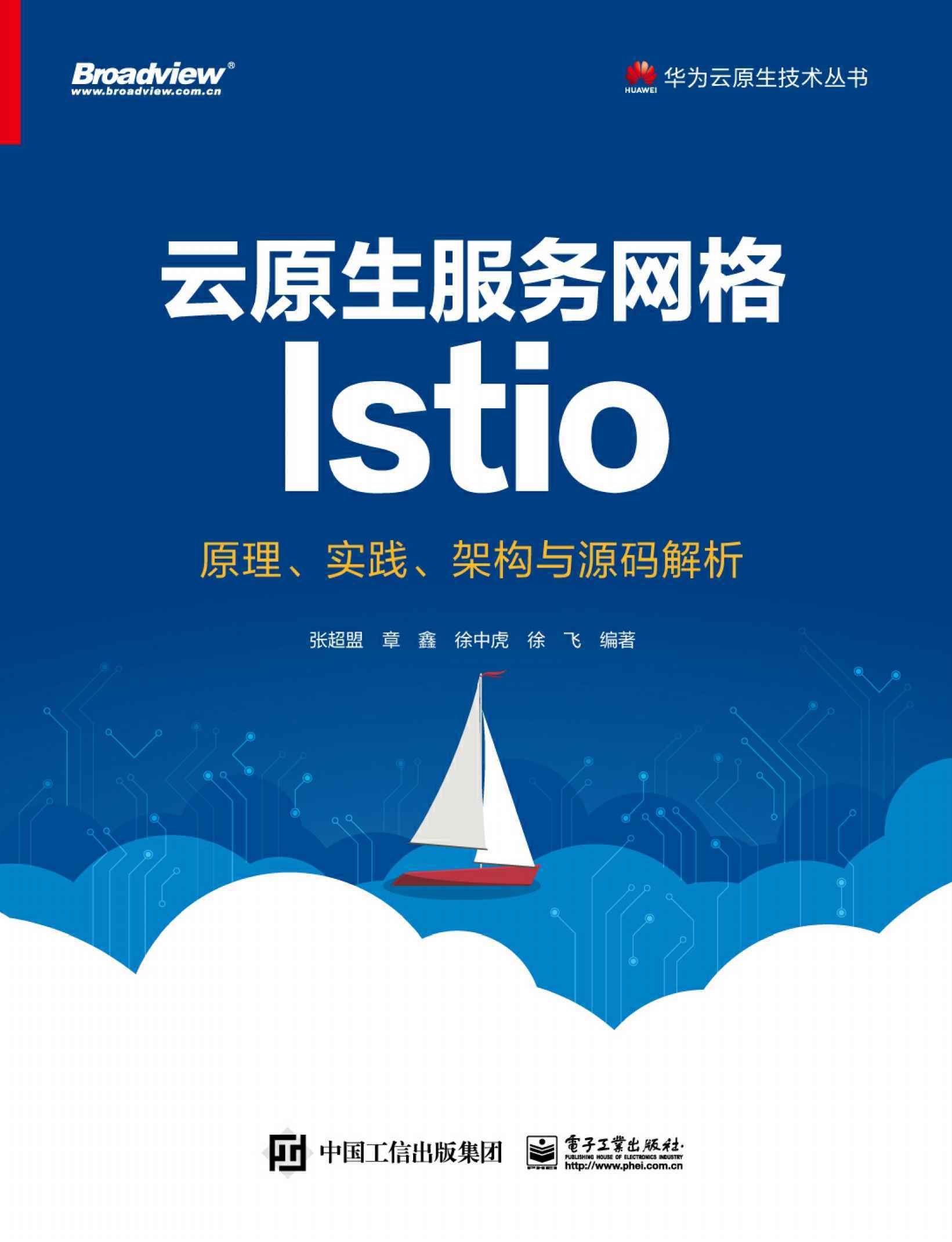
云原生服务网格Istio:原理、实践、架构与源码解析(elib.cc)
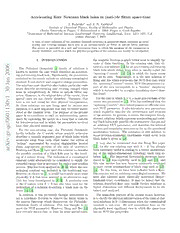
Accelerating Kerr-Newman black holes in (anti-)de Sitter space-time
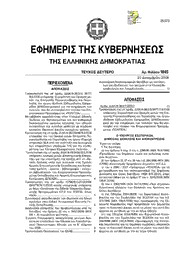
Greek Government Gazette: Part 2, 2006 no. 1845
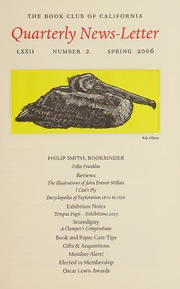
Quarterly News Letter
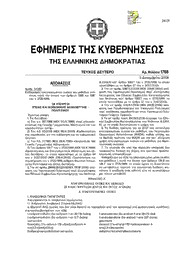
Greek Government Gazette: Part 2, 2006 no. 1768
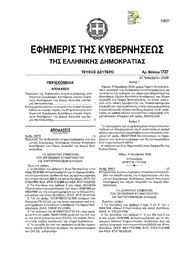
Greek Government Gazette: Part 2, 2006 no. 1727
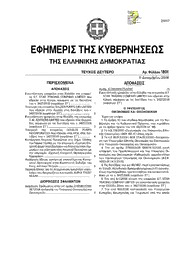
Greek Government Gazette: Part 2, 2006 no. 1801
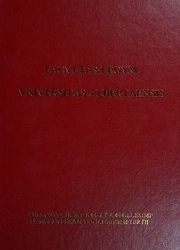
University of Alberta Faculty of Law yearbook (1993)
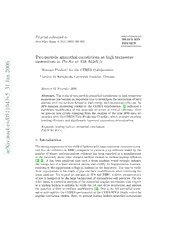
Two-particle azimuthal correlations at high transverse momentum in Pb-Au at 158 AGeV/c
